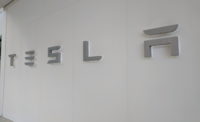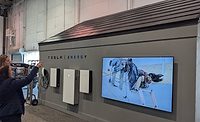Tesla reported one of its strongest years for its solar products, though official details about the role its Solar Roof played in that remain few and far between.
According to the fourth quarter (Q4) earnings report released on Jan. 25, Tesla deployed a total of 100 megawatts of solar in the final quarter of 2022. This is a 6.3% increase over the previous quarter, where the company deployed 94 megawatts.
Compared to the same time period last year, Tesla deployed 17.6% more solar than Q4 2021, where it sent out 85 megawatts. As a result, 2022 became one of the best for Tesla’s solar operations.
“Despite supply chain challenges, we deployed 348 megawatts of solar in 2022, the highest deployment since 2017,” the report states.
When looking at year-over-year totals, this amount is only marginally higher than 2021, where supply chain issues disrupted its operations and Tesla deployed a total of 345 megawatts. In the previous years, those numbers dipped to 205 in 2020 and 173 in 2019.
As with previous earnings reports, Tesla doesn’t provide a breakdown of its conventional solar panels versus its Solar Roof in the deployment numbers. The latest report makes no mention of the Solar Roof product, nor was the product brought up during the shareholder conference call on Jan. 25.
Tesla has seen its share of struggles with implementing the Solar Roof since it was first announced. The solar system, produced at Tesla’s Gigafactory 2 in New York, replaces the roof of a home with durable glass tiles that have built-in solar modules. In 2021, Tesla CEO Elon Musk said the company made “significant mistakes” in assessing the difficulty of how to install the product on complex roofs.
In addition, more competitors are entering the roof-integrated solar market. GAF Energy has received multiple accolades for its Timberline Solar product, launched in January 2022, which uses nailable solar shingles that are installed alongside regular asphalt shingles. A product released by Dyaqua dubbed “Invisible Solar” is also gaining attention. The product takes on the appearance of any building material, such as terracotta roof tiles, but has photovoltaic modules built into them. A pilot program is installing the tiles in the Portuguese city of Evora, according to EE Power.
Along with solar, Tesla's energy storage also saw increases compared to previous quarters. In the final quarter of 2022, the company deployed 2,462 megawatt-hours of storage, a 17.2% increase over the previous quarter and a 151.7% increase over the same time last year.
“The energy business had its strongest year yet across all metrics, led by steady improvement in both retail and commercial storage,” said Zach Kirkhorn, Tesla’s chief financial officer, during the earnings call.
According to Tesla, demand for its storage products remains in excess of its ability to supply it. To compensate, Tesla is ramping up production at its 40 gigawatt-hour Megapack factory in Lathrop, Calif.
“The three pillars of a sustainable energy future are obviously electric vehicles, solar and wind, and a third key item is energy storage,” said Musk during the earnings call. “If you have all three of those things, you can convert all of Earth to a fully sustainable situation, many times over, actually.”







